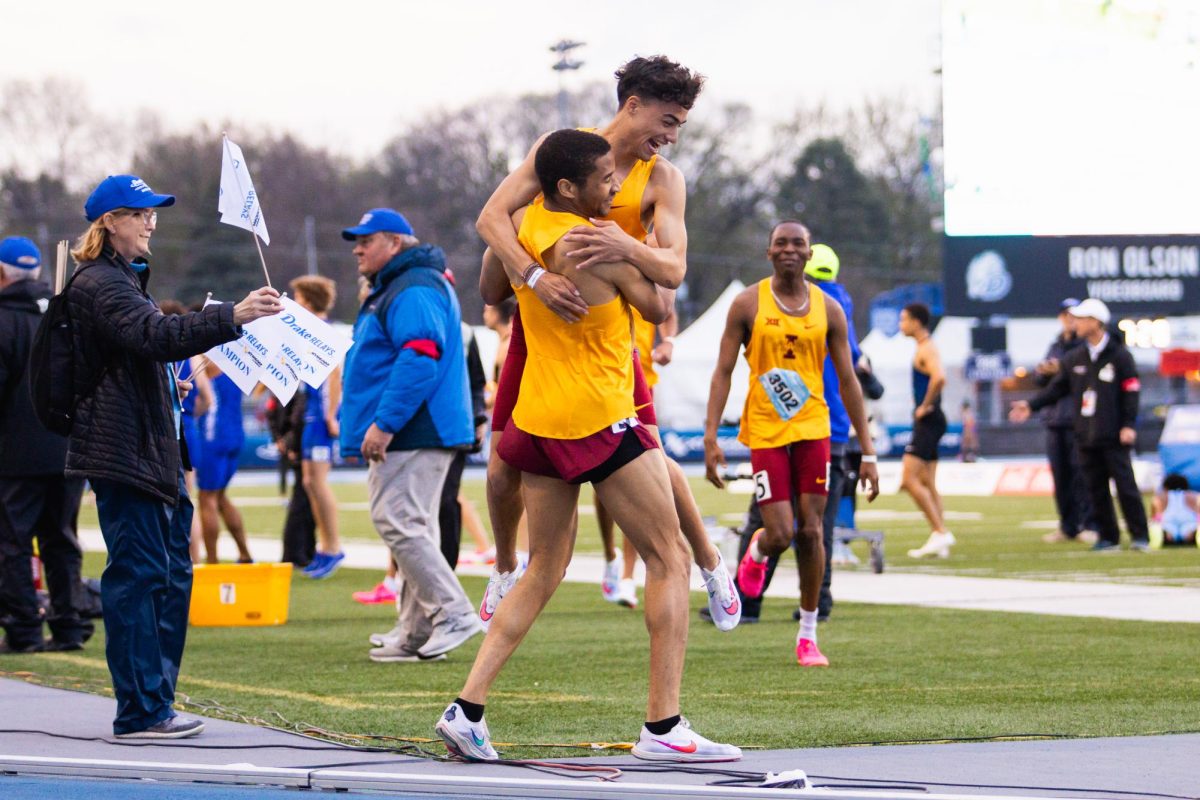Creative teaching strategies counter large classes
April 18, 2003
Large classes are nothing new to the campus environment, but previous and future budget cuts could make the issue even more of a problem at Iowa State.
The problem of overstuffed classrooms has been a major focus of the Center for Teaching Excellence this year, said Associate Director Susan Yager. In accordance with that focus, a faculty-focused workshop was presented Thursday afternoon.
David Meltzer, assistant professor of physics and astronomy, has done extensive research in making large introductory physics lecture courses more interactive. He shared several of his techniques with a group of about 15 faculty members from a wide variety of colleges and departments.
“Large classes are nothing new,” Meltzer said. “It is not necessarily that classes have gotten bigger, just that there is more interest in doing something about it.”
Meltzer described a technique employing flash cards to engage students in his class.
“The first thing they hear is how these flash cards work,” he said.
Students are required to bring them to class and then respond to several multiple choice questions throughout the class period.
“Clean and organized presentation [of material] does not come close to being sufficient,” Meltzer said.
Because limited resources will surely not shrink classes, many professors were hoping to be able to apply Meltzer’s ideas to their own classes.
“What I try to do is compare what I would have done … and decide if I think it’s better than what I do or not,” said Irvin Hentzel, professor of mathematics who teaches two large classes over the Internet.
Holly Bender, associate professor of veterinary pathology, said she wished she would have taken Meltzer’s physics class when she was in college.
Her largest class has about 105 students, and she said she was hoping to be able to use Meltzer’s techniques in her classes.
“I’m looking at ways to meld his techniques with mine and some [others],” she said. “He has some well-designed things that work.”
Many faculty members were curious about students simply following the crowd in their answers, signing names of friends for attendance points, not coming to class prepared and not completing their own assignments.
The adequacy of textbooks was another major concern.
When the book doesn’t do a good job, Bill Lee, lecturer in mathematics, said he has to give students the reading material in lecture form.
Others agreed, with consensus that approach is never the best for students’ learning.
“I don’t think any faculty would seek a larger class,” Yager said.
But that seems to be the way a lot of academic departments are being forced to go, she said. Creative teaching may be one way to counter continued budget restrictions.
















